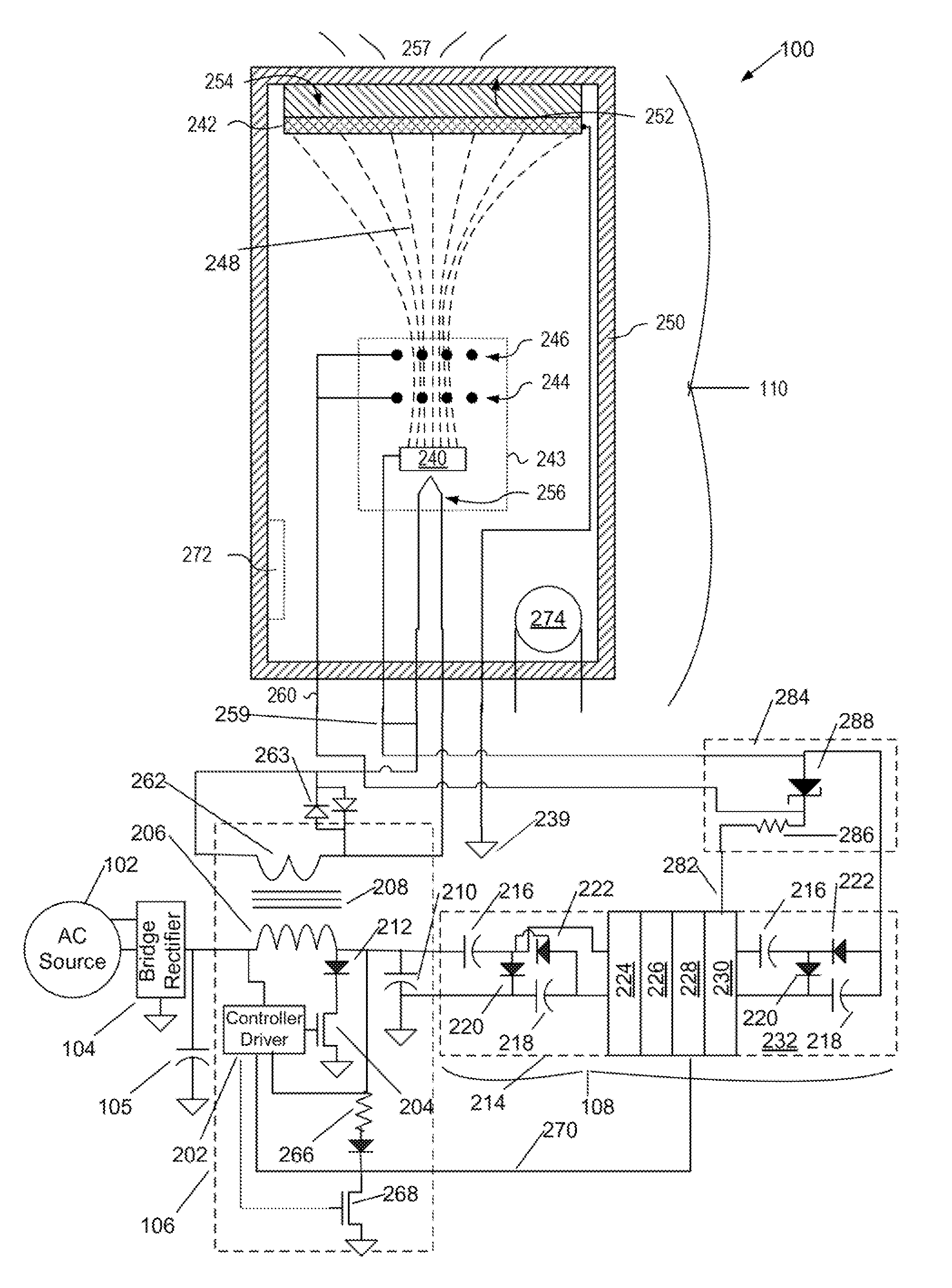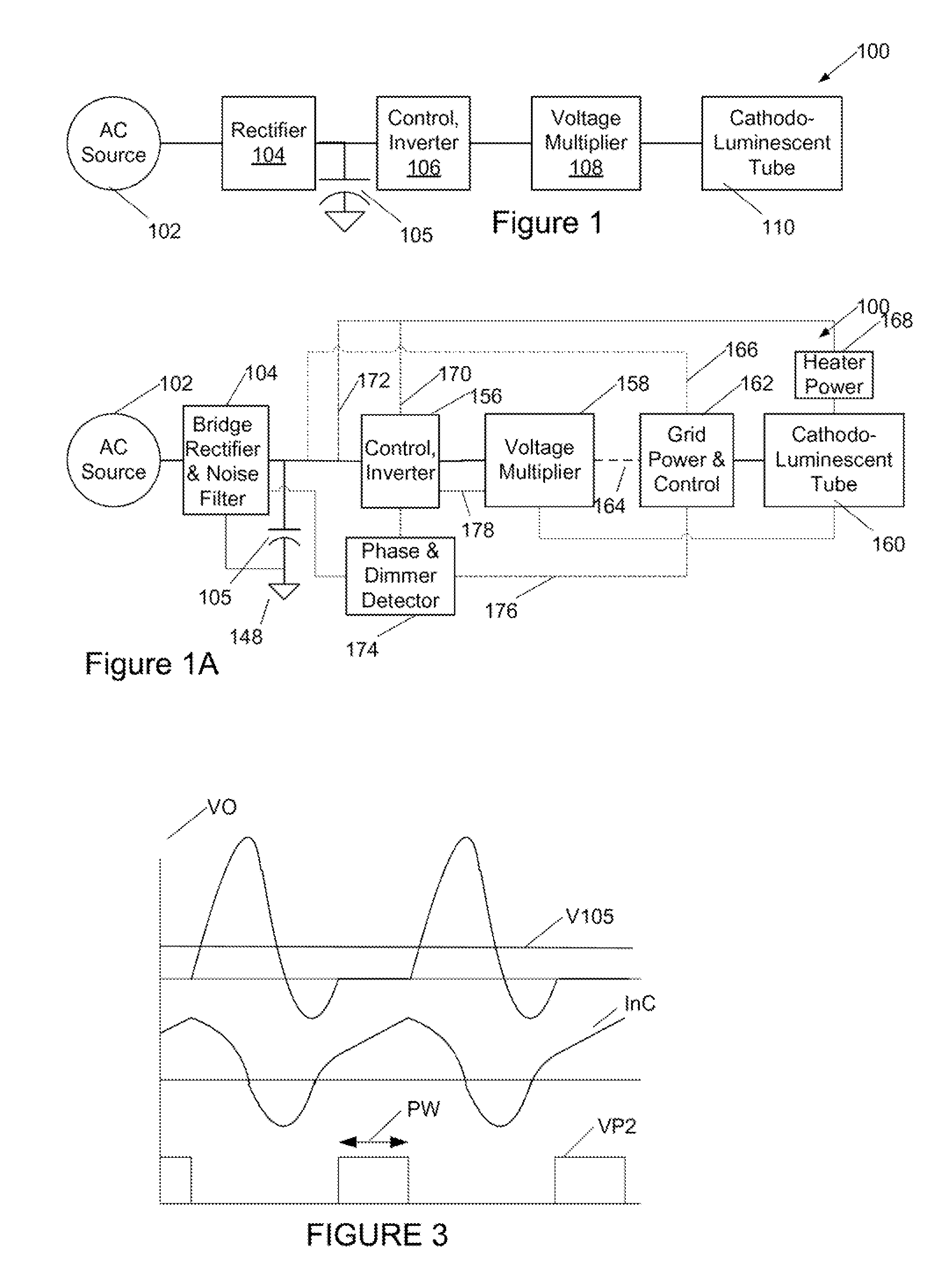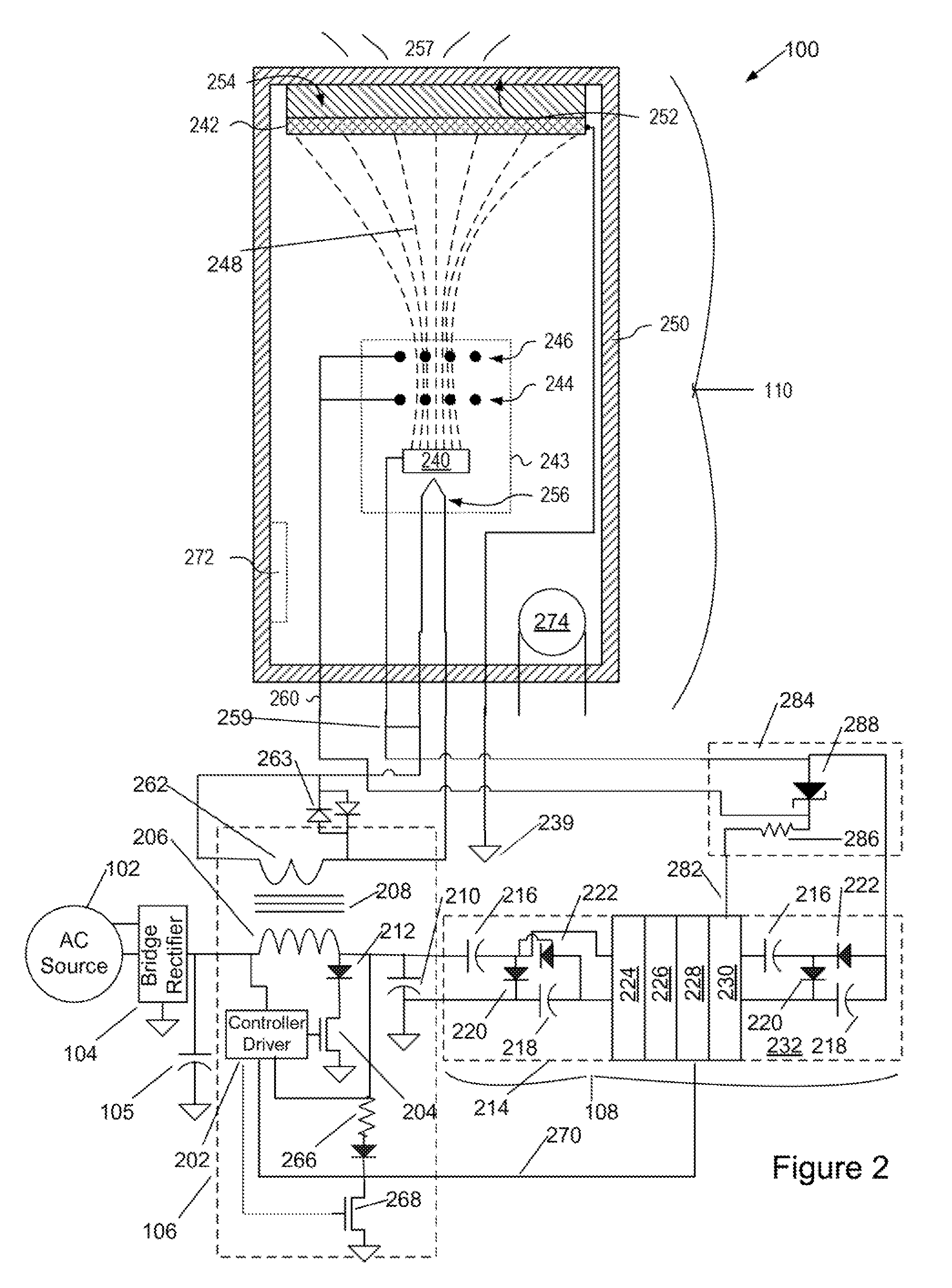System and apparatus for cathodoluminescent lighting
a technology of cathodoluminescent lighting and system and apparatus, which is applied in the manufacture of electrode systems, electric discharge tubes/lamps, instruments, etc., can solve the problems of inefficiency of the process, low efficiency of the lighting system, and high cost of light-emitting diodes
- Summary
- Abstract
- Description
- Claims
- Application Information
AI Technical Summary
Benefits of technology
Problems solved by technology
Method used
Image
Examples
embodiment 290
[0045]In the embodiment of FIG. 2, a voltage 282 between approximately one hundred and three hundred volts positive with respect to cathode 240 is tapped from the power supply formed by bridge rectifier 104, controller-inverter unit 106, and voltage multiplying rectifier 108; this voltage 282 is applied to the grid power and control 284 to provide a voltage 260 to extraction grid 244 and defocusing grid 246 of electron gun 243 of tube 110. In an embodiment, this supply incorporates a resistor 286 and Zener diode 288 to provide voltage 260 of approximately seventy-five volts positive with respect to the cathode 240; in alternative embodiments Zener diodes of other voltages may be used. In alternative embodiments, as illustrated in FIG. 2A, in an alternate embodiment 290 of the grid power and control 284, a small capacitor 291 taps an AC node in the voltage multiplying rectifier 108 to power a charge pump comprising diodes 292, 293, small filter capacitor 295 and Zener diode 294; the ...
embodiment 298
[0046]In yet another embodiments, as illustrated in FIG. 2B, in an alternate embodiment 298 of the grid power and control 284, a small inductor 298 is in series with capacitor 291 to tap an AC node in the voltage multiplying rectifier 108 to power a charge pump comprising diodes 292, 293, small filter capacitor 295 and Zener diode regulators 294. The extraction grid voltage may be derived from a modulator 296 or additional Zener diode. The charge pump is also coupled to the cathode 240 end of the voltage multiplier.
[0047]The power supply, including voltage-multiplying rectifier 108, grid power and control 284, and controller-inverter unit 106 is assembled using integrated circuit and surface-mount technologies as known in the art, and potted with a suitable high-voltage potting compound to prevent arcing.
[0048]In some embodiments, a voltage from a filter capacitor of the voltage-multiplying rectifier 108, which may be, but preferably is not, the highest output voltage of the voltage...
PUM
 Login to View More
Login to View More Abstract
Description
Claims
Application Information
 Login to View More
Login to View More - R&D
- Intellectual Property
- Life Sciences
- Materials
- Tech Scout
- Unparalleled Data Quality
- Higher Quality Content
- 60% Fewer Hallucinations
Browse by: Latest US Patents, China's latest patents, Technical Efficacy Thesaurus, Application Domain, Technology Topic, Popular Technical Reports.
© 2025 PatSnap. All rights reserved.Legal|Privacy policy|Modern Slavery Act Transparency Statement|Sitemap|About US| Contact US: help@patsnap.com



